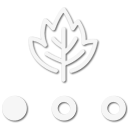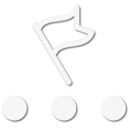The next piece of your safety kit should be a quality fire extinguisher. No matter the age of your vehicle, this should be a standard piece of equipment in every overland rig.
I'm going to keep this article short and to the point so let's get started...
Selection
Select a fire extinguisher based on your anticipated needs. A unit that is rated for B & C fires should be a minimum criteria for a vehicle unit. However, if you live in a forest fire potential area you might consider a A-B-C unit since the B & C only units aren't as effective on brush fires. (Note: Stopping or parking in tall grass can start a fire due to the intense heat in your catalytic converter.)
Here are is a list of the different classes and what they're used for:
- Class A extinguishers are for ordinary combustible materials such as paper, wood, cardboard, and most plastics. The numerical rating on these types of extinguishers indicates the amount of water it holds and the amount of fire it can extinguish. Geometric symbol (green triangle)
- Class B fires involve flammable or combustible liquids such as gasoline, kerosene, grease and oil. The numerical rating for class B extinguishers indicates the approximate number of square feet of fire it can extinguish. Geometric symbol (red square)
- Class C fires involve electrical equipment, such as appliances, wiring, circuit breakers and outlets. Never use water to extinguish class C fires - the risk of electrical shock is far too great! Class C extinguishers do not have a numerical rating. The C classification means the extinguishing agent is non-conductive. Geometric symbol (blue circle)
- Class D fire extinguishers are commonly found in a chemical laboratory. They are for fires that involve combustible metals, such as magnesium, titanium, potassium and sodium. These types of extinguishers also have no numerical rating, nor are they given a multi-purpose rating - they are designed for class D fires only. Geometric symbol (Yellow Decagon)
- Class K fire extinguishers are for fires that involve cooking oils, trans-fats, or fats in cooking appliances and are typically found in restaurant and cafeteria kitchens. Geometric symbol (black hexagon)
Composition
The type of agent within the unit may be something to consider if you want to minimize clean-up and potential damage to other components.
Excerpt from:
http://www.fire-extinguisher101.com/
"Water extinguishers or APW extinguishers (air-pressurized water) are suitable for class A fires only.
Never use a water extinguisher on grease fires, electrical fires or class D fires - the flames will spread and make the fire bigger! Water extinguishers are filled with water and are typically pressurized with air. Again - water extinguishers can be very dangerous in the wrong type of situation. Only fight the fire if you're certain it contains ordinary combustible materials only.
Dry chemical extinguishers come in a variety of types and are suitable for a combination of class A, B and C fires. These are filled with foam or powder and pressurized with nitrogen.BC - This is the regular type of dry chemical extinguisher. It is filled with sodium bicarbonate or potassium bicarbonate. The BC variety leaves a mildly corrosive residue which must be cleaned immediately to prevent any damage to materials.
ABC - This is the multipurpose dry chemical extinguisher. The ABC type is filled with monoammonium phosphate, a yellow powder that leaves a sticky residue that may be damaging to electrical appliances such as a computer."
Mounting
A 2.5 pound metal cylinder running free in your luggage compartment or back seat is recipe for potential vehicle damage or personal injury in the event of a collision or rollover. Strap that puppy down. This will not only keep you safe, but ensure you know where it is when you need it most.
Also, ensure you mount it in an
accessible location that won't be covered up when your rig is loaded up like the Beverly Hillbillies.
Extinguishing a Car Fire
1) Stop the vehicle and PUT IT IN PARK. It's easy to forget this step in an emergency. The last thing you need is a fireball rolling away from you while you're trying to dig out your extinguisher.
2) Get the passengers out of the vehicle, especially if they're kids. A few seconds hesitation trying to fight the fire before this step, could be a step in the wrong direction with tragic results. I know this goes against instinct but priorities are people, not vehicles. Call 911 at this point if possible.
3) Pull the pin on the extinguisher. Sounds silly, right? You would be surprised what you will forget in a rush. Best to have it in your mind now to help prepare yourself mentally.
4) If the fire is under the hood, pop the latch, but do not open it. Spray the extinguisher through the crack below the hood before attempting to open it all the way. A concealed fire in the engine compartment may be having trouble breathing if there is a lot of smoke. Opening the hood first could cause it to flare.
5) Always aim the extinguisher at the base of the fire. This might be difficult to locate in a tangle of components.
First, how NOT to extinguish a car fire:
Good discussion on car fire extinguishers:
Suggestions
2.5 lb ABC Dry Agent Unit $60 (I own this one)
http://www.summitracing.com/parts/htr-mx250r/overview/
2.5 lb B & C Halotron Unit $135
http://www.summitracing.com/parts/htr-hg250r/overview/
As always, I'm open to questions or comments on this topic.

















